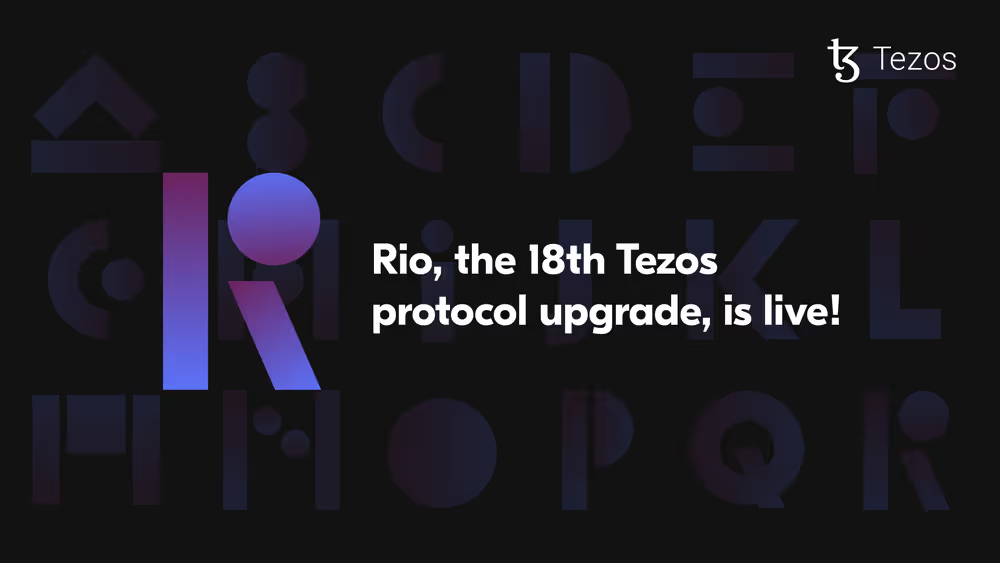Faster Cycles, New Rewards Model, Improved Resilience: Rio is Live!
The 18th Tezos protocol upgrade is now live!
4 minute read

On May 1 2025 11:07:24 UTC, the Tezos blockchain successfully activated the Rio protocol upgrade at block #8,767,488.
This 18th upgrade was jointly developed by Nomadic Labs, TriliTech, and Functori. It contains the following main changes:
Faster cycles: Going from 3-day to 1-day cycles means faster application of changes made by bakers, stakers, and delegators.
Rewards for DAL participation: 10% of participation rewards are allocated to participation in the Data Availability Layer (DAL), an essential component for L2 scalability and the Tezos X roadmap.
Reduced tolerance for baker inactivity: To improve the network’s resilience and reduce risk of slowdowns, tolerance for baker inactivity is reduced to 2 days.
Additionally, the proposal contains a minor fix of the gas consumption model. A detailed list of changes can be found in the protocol’s changelog. See also the Rio announcement post.
Cycles reduced to 1 day #
The Rio protocol reduces the network cycle length from around 3 days to 1 day.
Besides the intuitive benefits of aligning cycle length with a more familiar time unit, shorter cycles also mean that many staking-related changes take effect faster.
Notably, it now only takes 4 days to unstake funds. For a full overview of the effects of this change, see the Rio announcement.
Note that the duration of the governance process is unchanged (70 days total), with voting periods still being 14 days.
DAL participation rewards #
The Data Availability Layer (DAL) is key to boosting the scalability of Etherlink and other Tezos rollups, and for realizing the Tezos X roadmap.
With the Rio upgrade, 10% of participation rewards are now allocated to DAL participation, in order to promote smooth operation and honest behavior by participants. Baking now also requires running a DAL attester node by default, though bakers can opt-out.
The DAL rewards take effect when the DAL is operational, which requires 66% of the baking power participating. DAL participation is currently at 31% and steadily increasing.
While participation is below 66%, the new reward distribution is not applicable, and the 10% DAL rewards are instead distributed among all bakers.
Bakers still not participating in the DAL can use this tutorial to get started. We recommend first running the DAL node on the Ghostnet testnet, where it’s possible to test the setup with a fully operational DAL.
For feedback and support, see the #dal-testers channel on Discord.
A more detailed explanation of this change can be found in the Rio announcement, including the FAQ. See also the DAL documentation.
Reduced tolerance for inactive bakers #
To reduce the risk of unresponsive bakers slowing down the network, Rio introduces stricter baker inactivity thresholds. It makes the network more resilient as it adapts quicker to bakers going offline.
Bakers are now marked as inactive after 2 days, but can return to active status in 2 days.
A baker that is marked as inactive no longer receives consensus rights and must re-register as a baker to participate again.
Governance at its best #
We’d like to thank everyone contributing to the comprehensive early feedback on the Rio proposal, which allowed protocol developers to consider these inputs when finalizing the proposal.
Achieving alignment this way makes for better upgrade proposals and a smooth governance process. We look forward to continuing this constructive process as we take another step towards Tezos X with the upcoming ‘S’ proposal.
Stay tuned!